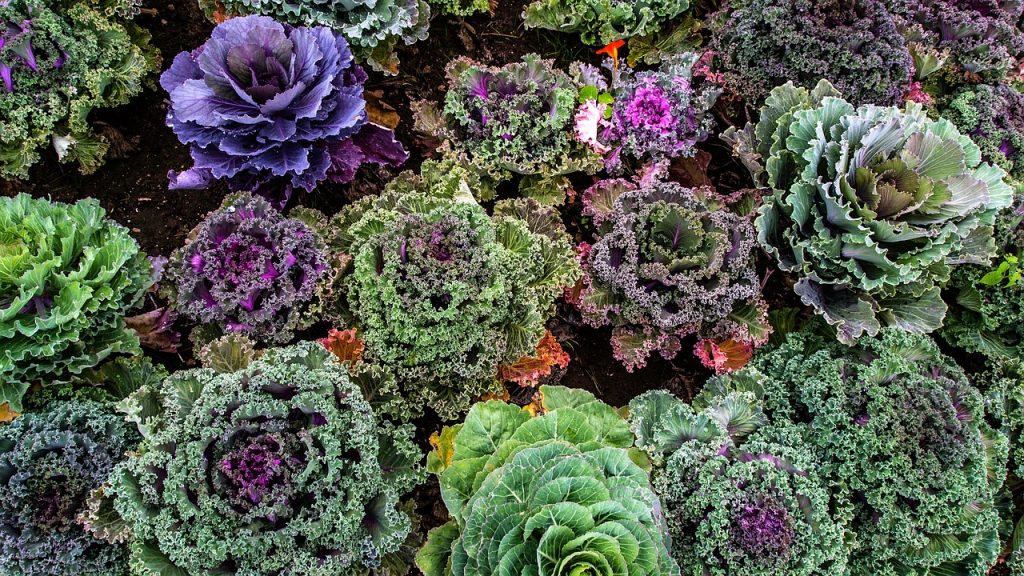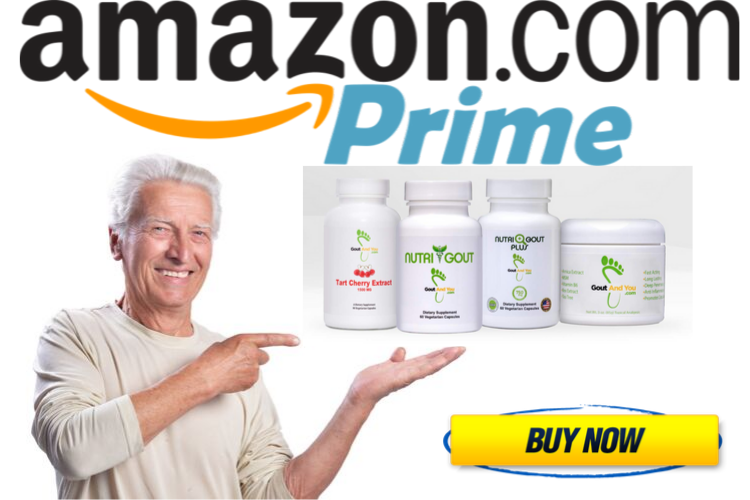
Read on to discover how kale can help maintain overall good health and if gout is one of the diseases that may be prevented by eating nutrient-rich vegetables like kale.
Kale is a popular leafy green vegetable, part of the Brassica oleracea family, which includes cabbage, cauliflower, Brussels sprouts, broccoli and other cruciferous vegetables. Kale is closest to cabbage, but its central leaves don’t form a head as cabbage does.
There are several types of kale differentiated by their leaves (which can be flat or curly) and their color (which can be green, white, red or purple). Curly kale is the most common variety. Other varieties include the likes of Lacinato, Red Russian, Chinese, Siberian, and Redbor.
Kale Health Benefits
Kale is Nutrient-Dense
Kale is rich in vitamins, minerals, complex carbs, and fiber, as well as antioxidants that help to combat free radicals which cause the cell damage that contributes to many diseases, including cancers.
1 cup (2.4 oz / 67 g) of raw, chopped kale is high in:
- vitamin A (206% DV)*
- vitamin C (134% DV)
- vitamin K (684% DV)
- manganese (26% DV)
and has good amounts of:
- copper (10% DV)
- calcium (9% DV)
- potassium (9% DV)
- iron (6% DV)
- magnesium (6% DV)
- dietary fiber (5% DV)
- folate (5% DV)
- thiamin (5% DV)
- riboflavin (5% DV)
- niacin (3% DV)
*Note: %DV is the percentage of the Daily Value for each nutrient in a serving of food. For example, 1 cup of raw, chopped kale provides 134% of your recommended daily vitamin C. Source.
Health Benefits
Studies have shown that the antioxidants and nutrients in kale have certain medicinal properties that help to maintain good health and lower the risk of some diseases.
For example:
- Vitamin A is vital for reproduction, growth and development, good vision, healthy skin, and healthy mucous membranes.
- Vitamin C has an important role in supporting vital functions, such as healthy skin and bones, healthy blood vessels, iron absorption, and immune system function.
- Vitamin K is essential for wound healing and may be an important factor in bone health.
- And these three vitamins have antioxidant properties that help to hoover up disease-causing free radicals.
Also, kale has good amounts of calcium for strong bones and teeth; potassium for proper heart function; iron for haemoglobin, temperature regulation, immune system support; and folate for red blood cell formation, healthy cell growth and proper cell function.
And at least one study has linked increased fiber consumption with a beneficial reduction in LDL (“bad” cholesterol), total cholesterol, and diastolic blood pressure which, together, can help to lower the risk of heart disease.
Another study has shown that increased magnesium can reduce the risk of metabolic syndrome, the medical term for a group of conditions — including high blood sugar, high blood pressure, high cholesterol, and obesity — which, together, increases your risk of heart disease, stroke and type 2 diabetes.
So kale is a fantastic vegetable that absolutely deserves to be in everyone’s diet, but is it safe if you have gout?
Kale and Gout
Gout
Gout is the most common form of inflammatory arthritis caused by unusually high levels of uric acid in the blood — a condition called hyperuricemia — out of which tiny crystals of monosodium urate form in joints and connective tissue. This can occur in any joint but the joint at the base of the big toe is the most common.
The body’s innate immune system triggers an inflammatory response to these crystals that manifests as a gout flare (attack) characterized by the sudden onset of swelling and inflammation around the affected joint. Other symptoms include being warm to the touch, red shiny skin, stiffness, and excruciating pain.
Uric acid is a byproduct of purine metabolism, which purines exist in our body’s cells and in the cells of the food we eat. Different foods have different purine levels so high-purine foods will produce more uric acid than moderate or low-purine foods when digested.
This is why gout patients are usually advised to avoid or severely limit high-purine foods.
Another consideration is the acidity of foods:
Uric acid crystals find it easier to form in an acid environment so that someone with gout should try to maintain a more alkaline environment, especially in their urine, since this can lower the risk of uric acid kidney stones.
And a food’s oxalate content is important too:
Oxalate is a natural compound found in plant foods at varying levels. They bind with calcium as they travel through your digestive tract and the calcium-oxalate “pair” is excreted in stools.
However, some unbound oxalates are diverted from the blood into the kidneys and then normally excreted in urine.
The problem occurs when too much oxalate builds up in your urine and combines with the calcium there to form tiny calcium-oxalate crystals that clump together to form a larger, more solid mass we know as a kidney stone.
So people at a high risk of calcium-oxalate kidney stones (the most common type of stone) are usually advised to eat a low-oxalate diet.
How does kale fare then? Is it safe when you have gout?
PURINE CONTENT
ACID OR ALKALINE?
Kale is an alkaline-forming food, when digested, so can promote a more alkaline environment that won’t increase the risk of uric acid crystal formation.
OXALATE
Kale is low in oxalate — 17 mg per 3.5 oz (100 g) serving — so won’t increase your risk of calcium-oxalate kidney stones.
So, overall, kale is safe to add into your gout diet.
But could kale make a more positive impact on your gout by actually helping to lower uric acid and reduce your risk of a gout flare as some other foods, such as cherries, do?
Kale and Gout Studies
So far, I haven’t discovered any gout studies directly related to kale. However, there are several studies that have looked into the relationship between nutrients and compounds in foods and the risk of gout.
VITAMIN C AND GOUT
A 2011 study linked an increase in vitamin C intake with a significant reduction in serum uric acid. A previous 2009 study had already associated vitamin C with a lower risk of gout.
And, as you’ve seen above, kale is especially rich in vitamin C.
FIBER AND GOUT
A 2019 Japanese study associated a high fiber diet with a lower risk of hyperuricemia and gout. And a 2015 Brazilian study discovered that a high-fiber diet helped to shorten the length of time it took for the symptoms of a gout attack to subside.
Kale is a good source of fiber.
QUERCETIN AND GOUT
A 2016 study showed that the flavonoid quercetin can inhibit xanthine oxidase — an enzyme involved in the production of uric acid — and so lower the risk of hyperuricemia and gout. Flavonoids are natural chemical compounds found in most plant foods and drinks, like tea and red wine.
Kale is a rich source of quercetin.
Overall, then, although there doesn’t seem to be any studies into the impact of kale on gout per se, there are quite a few gout studies into the beneficial effects of certain nutrients and compounds, several of which are found in kale.
So, not only is kale highly nutritious and safe to eat in a gout diet, it may also help to reduce your risk of a gout flare, when consumed as part of a well-balanced gout diet.



